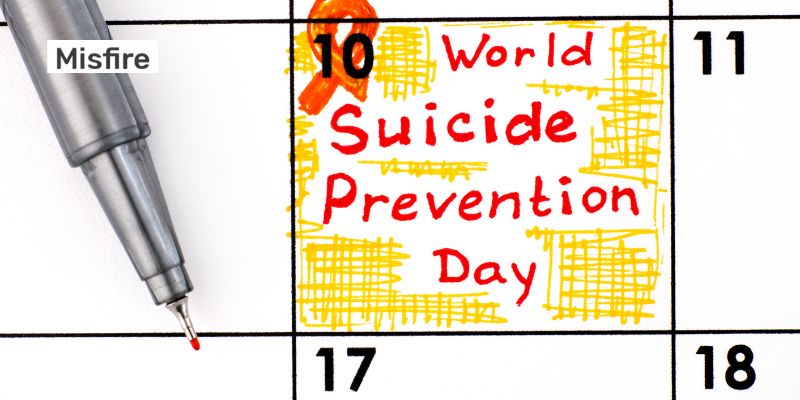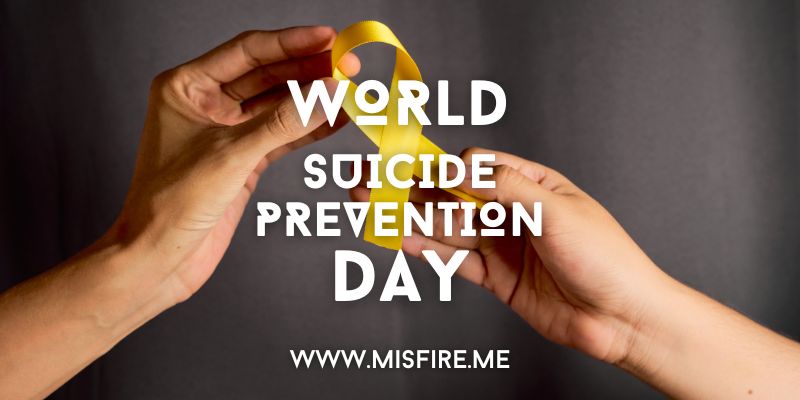World Suicide Prevention Day (WSPD) is observed annually on September 10th. Established in 2003 by the International Association for Suicide Prevention (IASP) in collaboration with the World Health Organization (WHO), this day serves as a powerful reminder that suicides are preventable through evidence-based action.
The Triennial Theme: Creating Hope Through Action
The triennial theme for WSPD from 2021 to 2023 is “Creating Hope Through Action.” This theme emphasizes that there is an alternative to suicide and that our actions can encourage hope and strengthen prevention efforts. Here’s what it signifies:
- Hope Exists: By creating hope through action, we signal to people experiencing suicidal thoughts that there is hope. We care, and we want to support them. This can be achieved through visible community efforts, such as awareness campaigns and support groups, which show that help is available.
- Small Acts Matter: Our actions, no matter how big or small, may provide hope to those who are struggling. A kind word, a listening ear, or connecting someone to professional help—all contribute to preventing suicides. Simple gestures like checking in on a friend, offering a ride to a therapy appointment, or just being present can have a profound impact.
- Public Health Priority: Suicide prevention is a public health priority. Urgent action is required to reduce suicide mortality rates globally. This involves government policies, healthcare reforms, and community-based programs that aim to make mental health care more accessible and reduce the stigma associated with seeking help.

Why Is Suicide Prevention Important?
- 700,000 Lives Lost: Currently, there are more than 700,000 suicides per year worldwide. Each suicide profoundly affects many more people—friends, family, and communities. The ripple effect of a single suicide can impact dozens of individuals, causing emotional, psychological, and sometimes financial distress.
- Reducing Stigma: WSPD aims to raise awareness, reduce stigma, and emphasize that suicides are preventable. By talking openly about mental health and suicide, we break down barriers and encourage seeking help. Stigma reduction can be achieved through education, personal stories, and public endorsements from well-known figures.
Understanding the Psychological Aspects
It’s crucial to understand the psychological factors contributing to suicidal thoughts and behaviors. Here are some key aspects:
- Mental Health Disorders: Conditions such as depression, anxiety, and bipolar disorder significantly increase the risk of suicide. Early diagnosis and treatment are essential. Therapy, medication, and lifestyle changes can help manage these conditions and reduce the risk.
- Trauma and Abuse: Past experiences of trauma, abuse, or significant loss can lead to feelings of hopelessness and despair. Support systems and therapeutic interventions are vital. Programs that address and heal trauma can provide individuals with the tools to overcome their past and build a hopeful future.
- Cognitive Distortions: Negative thought patterns and cognitive distortions can exacerbate feelings of worthlessness. Cognitive-behavioral therapy (CBT) can help reframe these thoughts. CBT teaches individuals to recognize and change destructive thinking patterns, fostering a more positive outlook.
How Can You Contribute?
- Spread Awareness: Share information about WSPD on social media. Use the hashtag #WorldSuicidePreventionDay to join the global conversation. You can also participate in local events, write articles, or host webinars to spread the word.
- Learn the Signs: Educate yourself about the signs of suicidal thoughts and how to support someone in crisis. These can include withdrawal, changes in mood, and expressing feelings of hopelessness. Being informed enables you to act swiftly and appropriately.
- Be Compassionate: Show empathy and kindness. Reach out to friends, family, or colleagues who might be struggling. Active listening and offering support without judgment can make a significant difference. Sometimes, just knowing someone cares can be enough to prevent a tragedy.
- Seek Professional Help: If you or someone you know is experiencing suicidal thoughts, encourage seeking professional help. Helplines and mental health services are available worldwide. Don’t hesitate to guide them to resources such as counselors, therapists, or support groups.
Promoting Resilience and Coping Strategies
Building resilience and teaching coping strategies are essential components of suicide prevention:
- Resilience Training: Programs that focus on building resilience can help individuals develop the skills to cope with stress and adversity. Resilience training can include workshops, support groups, and educational sessions that teach problem-solving, emotional regulation, and stress management.
- Mindfulness and Relaxation Techniques: Practices such as mindfulness, meditation, and deep-breathing exercises can reduce anxiety and improve emotional regulation. These techniques help individuals stay grounded in the present moment and manage overwhelming emotions.
- Social Support Networks: Encouraging the development of strong, supportive relationships can provide a buffer against suicidal thoughts and behaviors. Support networks can include family, friends, community groups, and online forums where individuals can share their experiences and receive encouragement.
Together, We Can Prevent Suicides
By coming together, raising awareness, and taking action, we can create a world where hope prevails over despair. Let’s commit to preventing suicides and supporting those in need. Remember, you are not alone, and there is always hope.
By fostering a supportive and informed community, we can reduce the incidence of suicide and create a more hopeful future for everyone. Utilizing comprehensive Suicide Prevention Resources can further aid in these efforts, ensuring that those in need receive the appropriate care and support.

